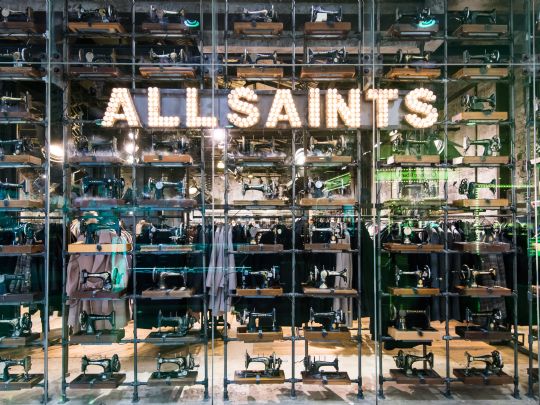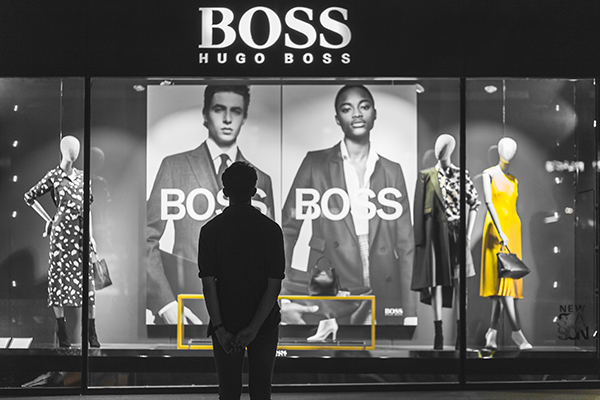Retail Business Technology Expo (RBTE) returned to London’s Olympia over 9th-10th March, providing a platform for leading technology companies and senior retailers to join forces and map out their future strategies.
Needless to say digital was at the forefront of attendees’ minds and this was reflected in many of the solutions displayed on exhibitors’ stands and in the topics discussed during the various conference streams.
There was also evidence this year of a broadening acknowledgement that the physical store is here to stay and that technology is being used more in a complementary, supporting sense, rather than as a replacement to stores – notably with Click and Collect.
Terry Duddy, non-executive director of Debenhams and former CEO of Home Retail Group, told attendees on day one: “The fastest growing online channel in the UK market is Click & Collect, which involves the store being central to the transaction. The store is growing in importance but is being neglected and misunderstood. By 2020 stores will be the focus for 87 per cent of all retail sales from either transactions in-store or from collect from store for online orders.”
He reckoned the media was over-stating the importance of online to the cost of the store and supported this argument with research from Conlumino, which showed the percentage of online sales had almost doubled from 7.3 per cent to 13.1 per cent between 2009 and 2014, but that it was forecast to increase much more modestly to only 16.7 per cent between now and 2019.
“Retailers are enjoying the benefits of online growth but it’s rather disappointing. Digital disruption has slowed somewhat,” Duddy says.
Even though Sainsbury’s is looking to boost its digital proposition, in order to grab a greater share of the online market, a presentation from Robbie Feather, online director at Sainsbury’s, highlighted how stores remain a vitally important component of its strategy.
Not only is it competing to buy Argos – partly to utilise its physical estate as a fulfilment tool – but he says that being able to pick-from-stores for online food orders gives it a significant advantage over the pure-plays like Amazon.
“We’re committed to picking from store because you can share overheads [with the stores] and the market is moving towards Click and Collect and one-hour delivery for which you need to pick the products close to where the customers are,” he suggests.
Although Feather says online food sales are only forecast to grow from a present 5.3 per cent to 10 per cent of the market, he believes this figure could increase dramatically with the advent of one-hour deliveries as this would bring in the convenience market, which would extend it beyond the weekly shop that presently makes up the bulk of online food purchases.
One major competitor in the online food market is Ocado, which contrasts with Sainsbury’s in believing that the future of online shopping centres on dedicated distribution warehouses rather than picking from stores.
Among the exhibitors at RBTE was Cambridge Consultants, which employs 600 scientists across many disciplines and has worked with Ocado for two and a half years to overhaul its Hatfield depot to enable much more efficient use of this large-scale site, which uses lots of automation.
Nathan Wrench, associate director of products and systems at Cambridge Consultants, says: “Ocado wanted a radically new and different solution. To do more picking with fewer people in the same space and therefore bring the cost per unit down. The revenue per square metre per person at the site is now groundbreaking,” he says.
Such iterations of the model are essential because there is a serious issue with profitability of most online propositions. Hence many of the solutions at RBTE involve better inventory management and visibility of stock across channels.
Only with a single view of stock is it truly possible to cost-effectively handle customers who want ever quicker deliveries – invariably at no cost to themselves. Against this tough backdrop Phil Geary, marketing and e-commerce director at The Entertainer, told attendees at RBTE that it is essential to focus on what works best financially while not losing sight of what also appeals to customers.
“As they demand more – such as quicker delivery, more payment options and cheaper deliveries – you have to work out what you can do best and also get the return on investment. Many elements can chip away at profitability and you’ve got try to find out what works for you,” he says.
Steve Mader, VP of digital and retail insights at Kantar Retail, believes small retailers outsourcing to the likes of Amazon, Instacart, Google or Uber for their on-demand delivery solutions will be a big trend in the future. Geary, however, is wary of taking such an approach as there is the risk of losing the vitally important direct relationship with the customer to these tech-led businesses.
Using technology to enhance the relationship is certainly proving very worthwhile for Topps Tiles, which is installing a ‘visualiser’ tool in its stores. The online solution provides both inspiration and the platform for customers to design their interior spaces. It enables them to define their room projects online and fully personalise the designs. An important element of its success is its multi-platform capability.
“Wherever you start the [design] journey there is the capability to maintain it end-to-end across multi-platforms – mobile, desktop, iPads and also in-store. The visualiser is about creating a seamless journey across all touch-points. We need all the elements coming together,” says Phil D’Souza, merchandising director at Topps Tiles.
One of the most important aspects of such technology is that it is appealing to use by the customer – whether they are using it in-store or at home on their own devices. For many years the interface on in-store technology such as kiosks had been a major problem because it felt alien to customers.
This is changing as technology is becoming a core part of the customer experience. However, Jamie Purser, category manager at PC World, says there are still many examples out there of poorly designed solutions that continue to put people off. “Self-checkouts work but some people just don’t get it,” he says.
Not surprisingly, the likes of NCR have been working on developing interfaces that more reflect the experience shoppers enjoy on their smart-phones. “People love their smart-phones so if you can build technology like that then they will also love it. They don't like bad technology,” adds Purser. “It's the ‘consumerisation’ of IT.”
It is also another example of how the customer is increasingly in the driving seat in determining the types of technology that retailers should adopt and also the speed with which they should implement them.
On a panel at RBTE titled ‘Innovation in Retail Payments’ one of the key conclusions was that innovation per se is not important. It is only relevant if it is actually solving a problem for customers.
Matthew Hudson, head of business development at Transport for London, which has rolled out probably the most effective contactless implementation in the UK, says: “We don’t need innovation, innovation, and innovation. At TfL we just look to solve problems. And in this case my problem was moving people around. We’re not bothered about anything else. Apple Pay – so what! There is also a challenge with biometrics as there could be a problem [with speed of authentication]. Customers will choose the most convenient form factor.”
David Baker, head of the card payments innovations unit at the UK Cards Association, agrees: “The days of technology push are over. The days of saying ‘here’s a product, you must make it work’ are finished. We have to talk to each other about the needs of the consumer and the demands that are therefore placed on retailers.”
This represents a very different dynamic in the industry and one that looks set to herald a period of much greater collaboration between retailers and technology providers – because not only is it healthy but it is what the customer is ultimately demanding.
Latest News
-
Retail sales remain flat as department stores and food take a hit
-
New Look’s ESG targets approved by SBTi
-
UK Amazon workers could form ‘Europe’s first’ recognised union after ruling
-
UK Supermarkets providing misleading product origin information claims Which?
-
Amazon to double sales of ‘Just Walk Out’ tech to third-party retailers
-
bp rolls out body cams to combat crime
The Very Group
Smarter merchandise planning across the retail value chain
In this webinar, Matt Hopkins, Head of Retail Solutions, Board, Catherine Tooke, SVP Product & Planning, Sweaty Betty, and Subir Gupta, Managing Principal, Thought Provoking Consulting join Retail Systems Editor Jonathan Easton to discuss the findings of the recent Retail Systems report The Merchandise Planning Challenge: How are retailers harnessing technology to optimise planning and retain customers? and examine the innovations that are improving retail planning.
© 2019 Perspective Publishing Privacy & Cookies















Recent Stories